
| The reproductive organs of the flowering plants are basically designed to attract pollinators, a classic example of a mutualistic interaction in which both partners benefit from their interaction - in modern parlance a win-win situation. The plants offers food, either in the form of nectar or pollen. Since for plants sugars are rarely if ever limiting, producing nectar is relatively cheap for them. Pollen bear a higher cost, as these are meant to pollinate other plants and are more expensive as their production requires proteins and hence nitrogen - often a limiting nutrient to the plant. In return for the food offered, insects bring pollen from one flower to another; or even better, from one plant to another, promoting cross-fertilization. The few photos below show just a handful of examples of the interaction between plants and their pollinators. The topic is at length treated in the book by Patt Wilmer (2011), Pollination and Floral Ecology. |
| Xylocopa violacea |
| Authority | : | (Linnaeus, 1758) |
| Nederlands | : | Blauwzwarte houtbij |
| English | : | Violet carpenter bee |
| Deutsch | : | Blauschwarze Holzbiene |
 |
 |
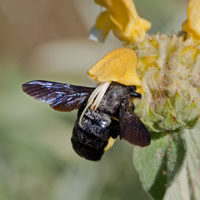 |
| Pinara (Muğla), Türkiye; 13 June 2009. | ||
| Andrena barbilabris |
| Authority | : | (Kirby, 1802) |
| Nederlands | : | Witbaardzandbij |
| English | : | Sandpit mining bee |
| Deutsch | : | Bärtige Sandbiene |
 |
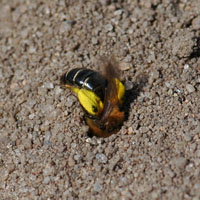 |
| Amsterdamse Waterleidingduinen, the Netherlands; 26 April - 3 May 2008. | |
Bees store pollen and food for their developing larvae. After collecting the pollen, they bring their cargo to the nest where the pollen is stored. For the plant this means simply a loss of resources, as the pollen 'were meant to' fertilize another plant. The plant in this example, a Willow, has male and females plants and so for fertilization ta take place, after collecting pollen from a male plant the bee must visit a female plant to drink nectar. |
| Sphex flavipennis |
 |
 |
 |
| Asmadere (Batman), Türkiye; 14 June 2010. | ||
|
Campsomeriella thoracica |
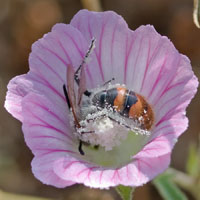 |
| Patara (Antalya), Türkiye; 14 June 2009. |
|
Scolia cf. flaviceps |
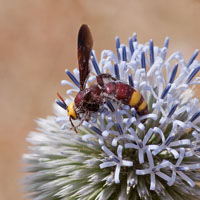 |
| Asmadere (Batman), Türkiye; 14 June 2010. |
| Two scolid wasps with lots of pollen attached to their bodies. |
| Nemestrinus caucasicus |
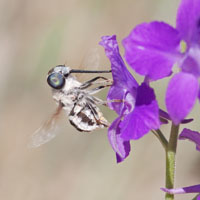 |
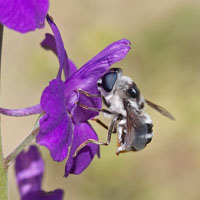 |
 |
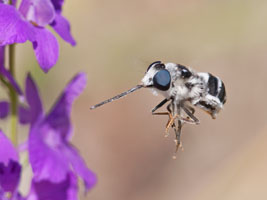 |
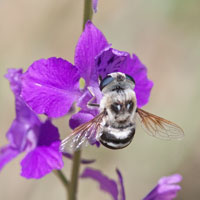 |
| Kumluca Köyü (Burdur), Türkiye; 10 June 2012. | ||
| This long-tongued fly is well adapted to obtain nectar from this plant, whose flowers has long spurs from which the nectar is to be collected. |